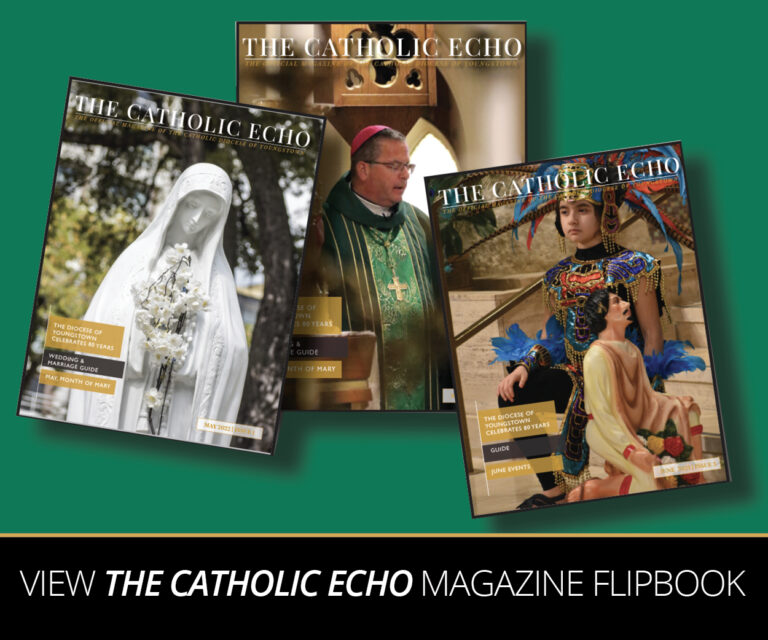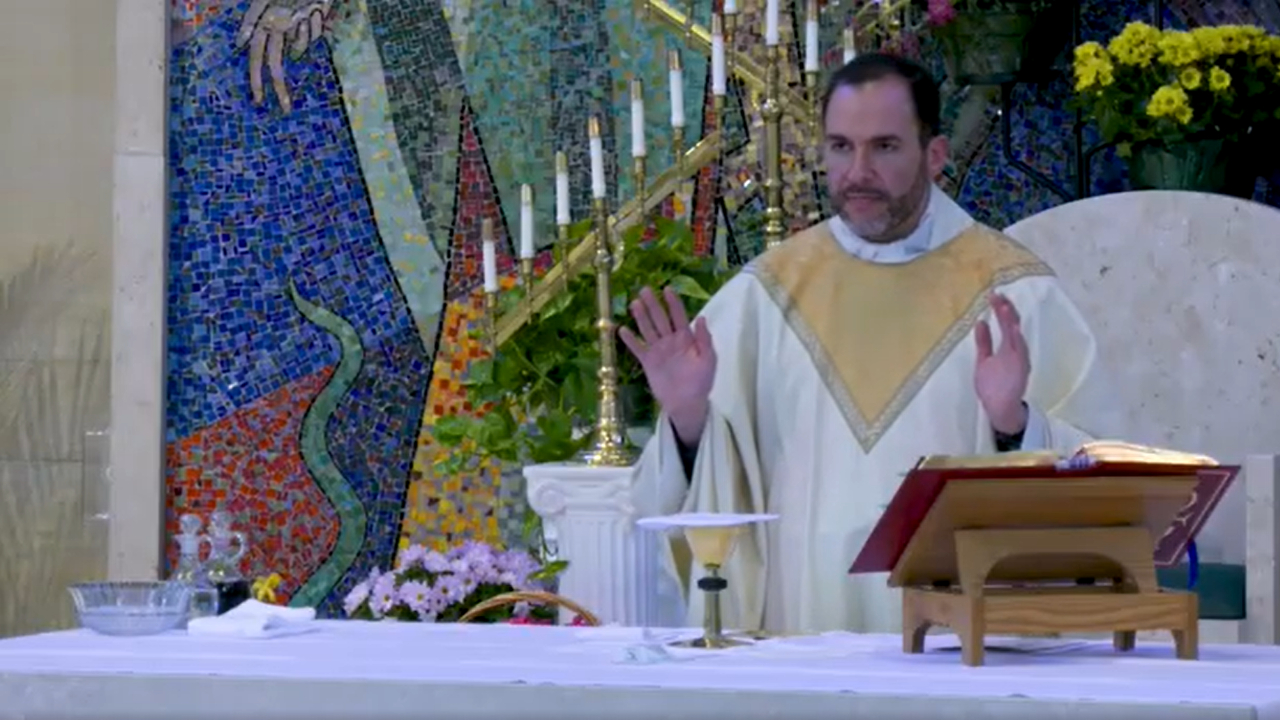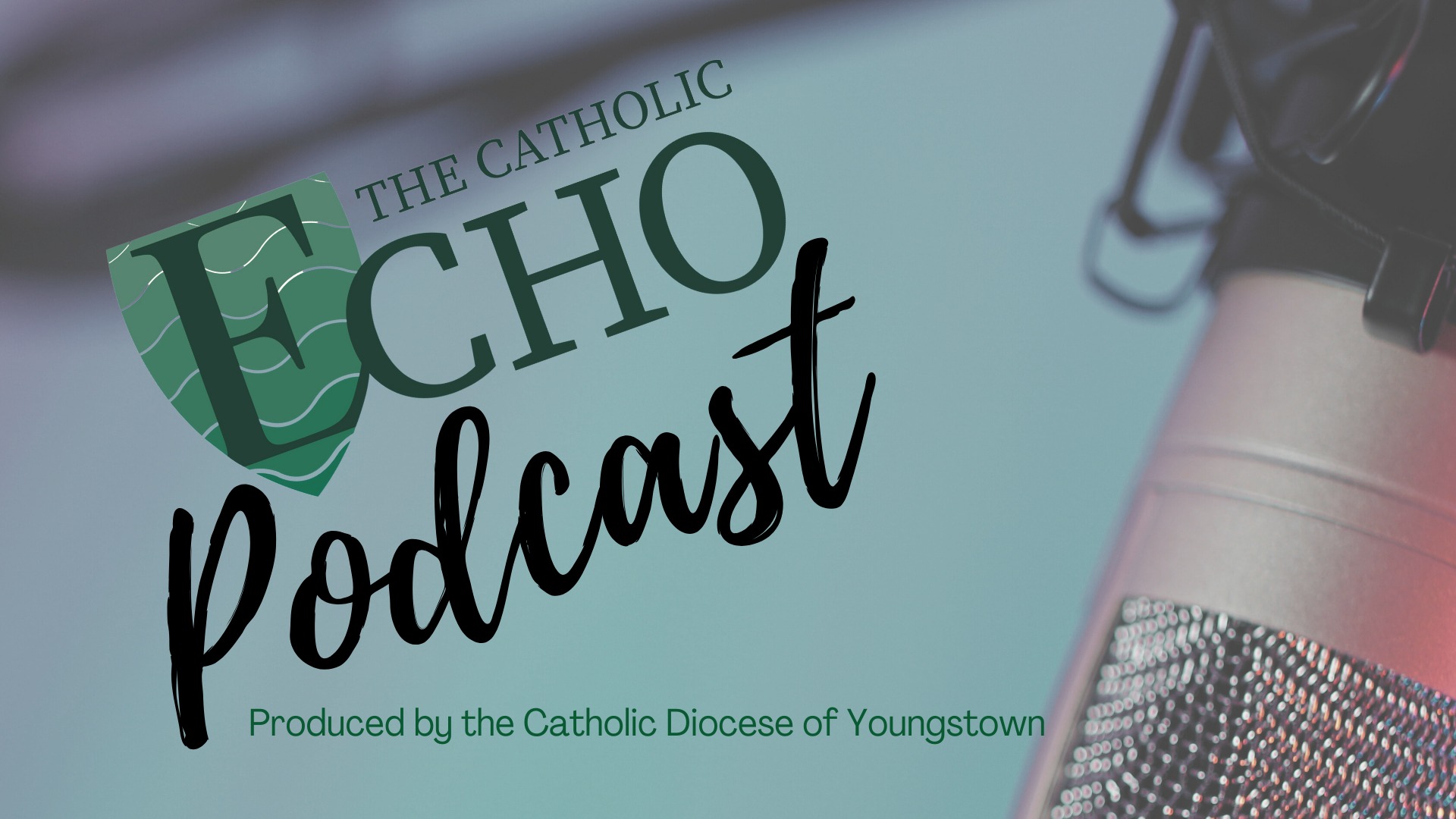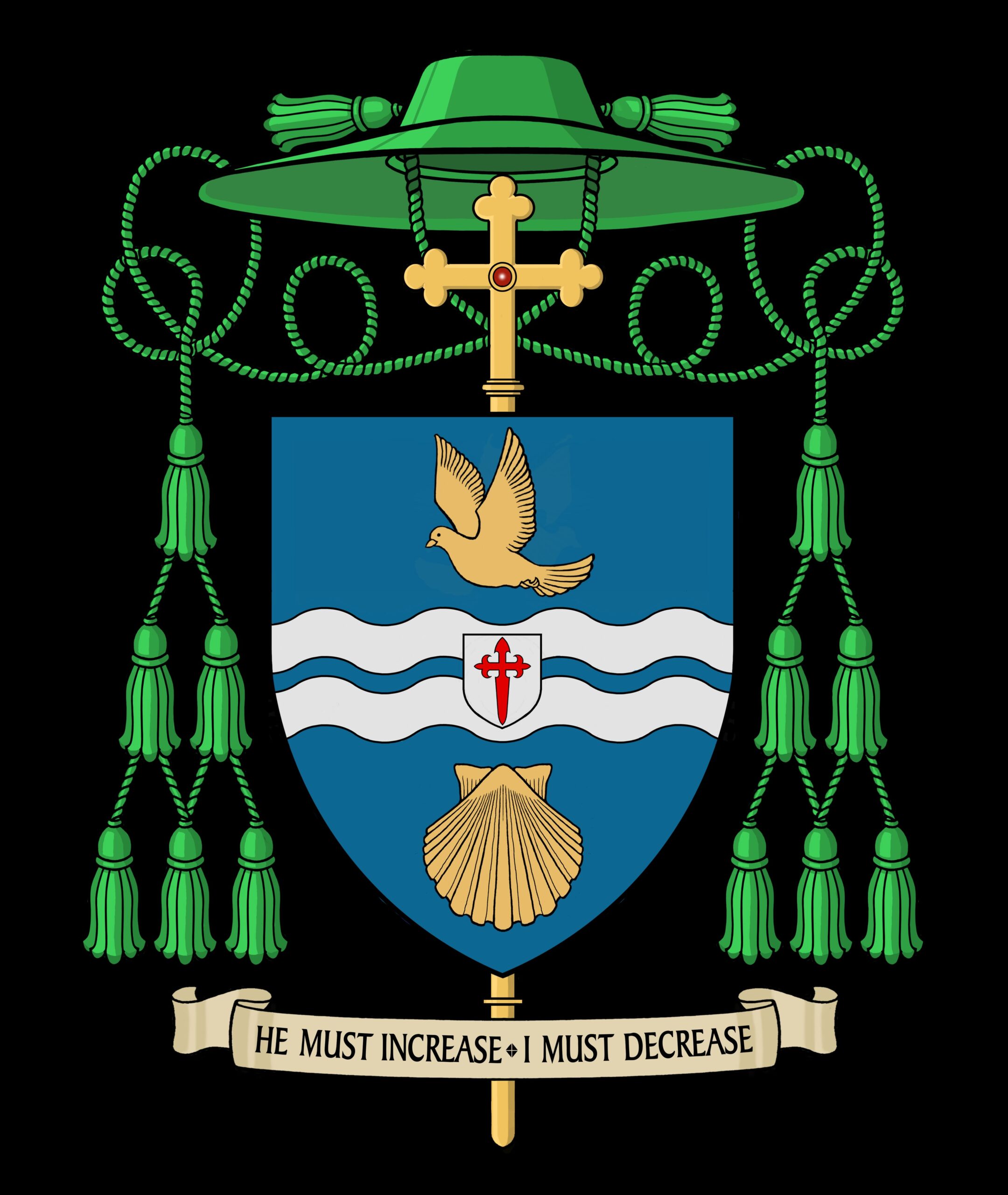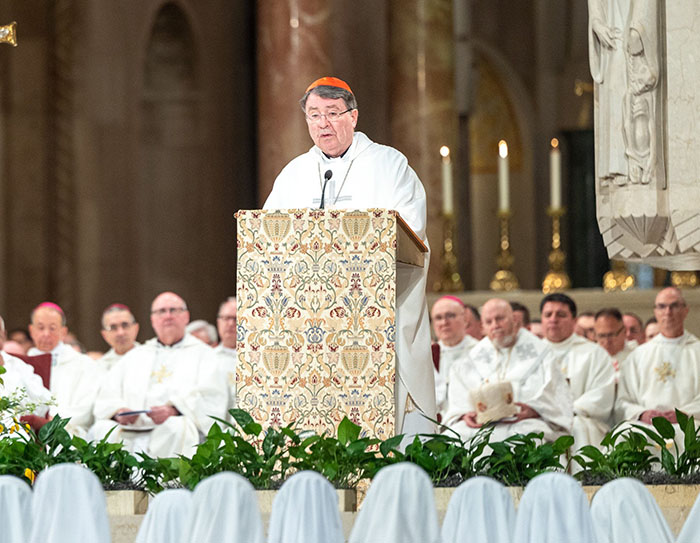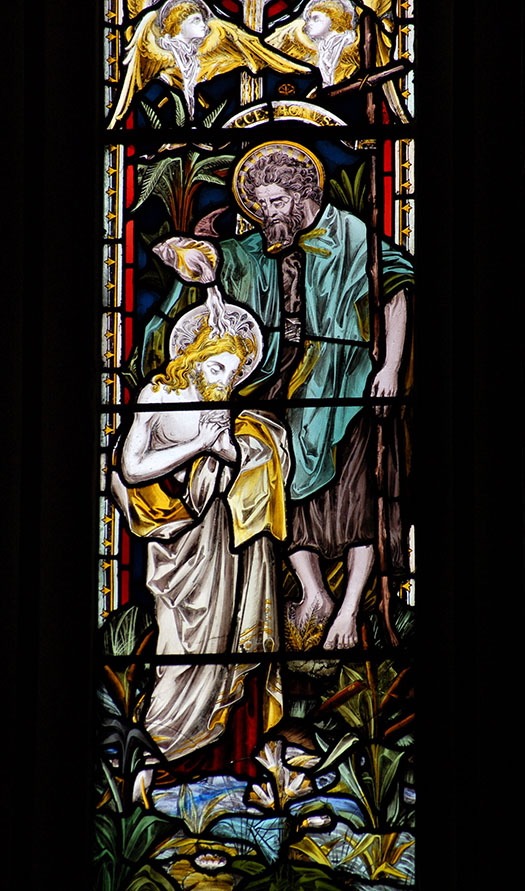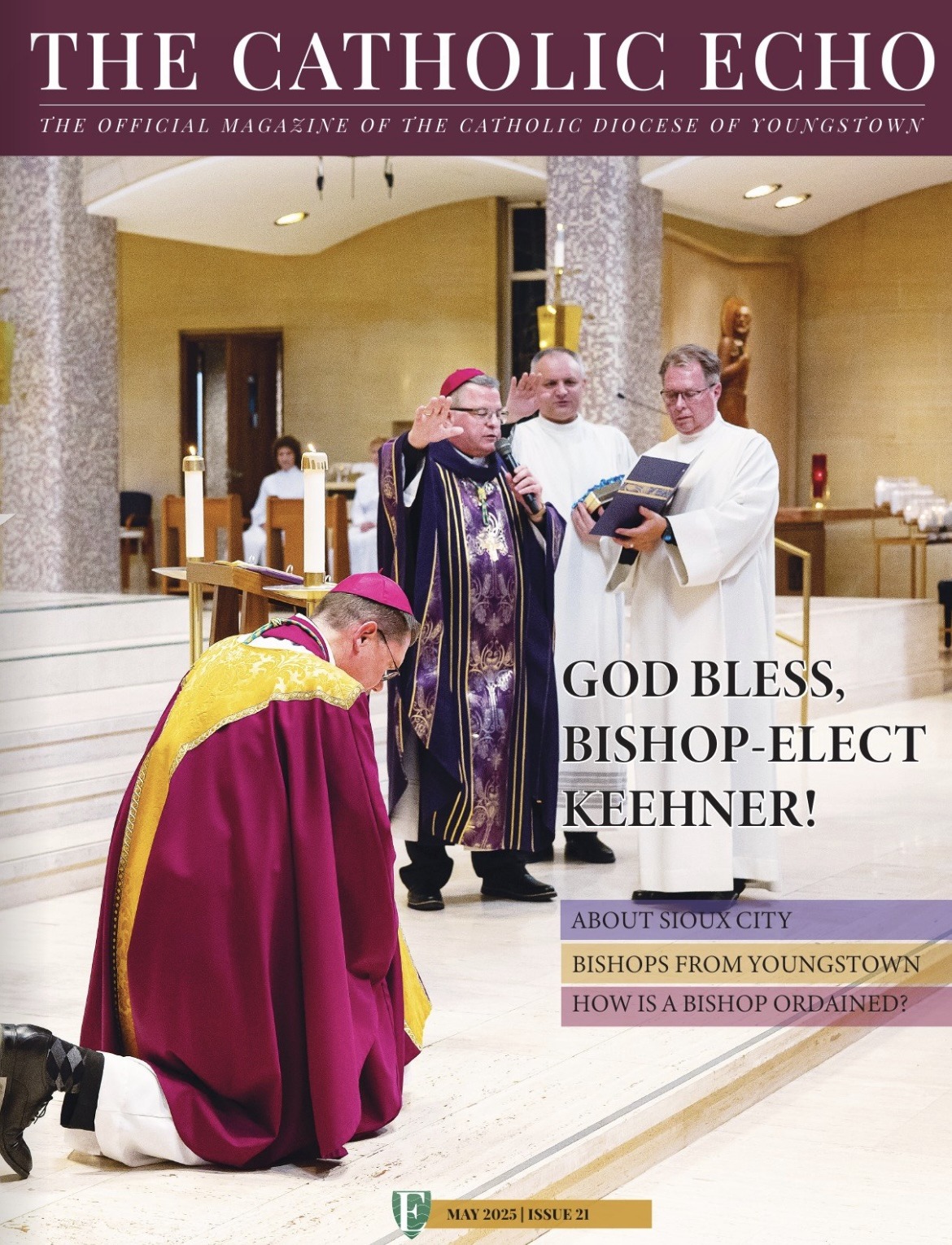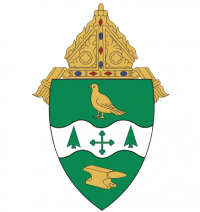As is the custom when Bishops are named by the Holy Father, a Bishop-elect works with a special artist to create a personal coat of arms and one combined with the diocese they have been called to serve. Bishop-elect John Keehner recently received his completed coat of arms by heraldic artist David Burkart—as recommended by Father Andrew Galles, director of worship for the Diocese of Sioux City.
“David Burkart is an excellent heraldist who is very educated and knowledgeable in both design and the nuances of medieval heraldry. Both Father David Esquiliano [rector of the Cathedral of the Epiphany in Sioux City] and I recommended him to Bishop-elect Keehner because of his ability and our past work with him on the coat of arms design for the Cathedral of the Epiphany,” Father Galles explained, noting Burkart also designed the new crest for St. Mary Parish and School in Storm Lake.
In his conversations with the artist, the Bishop-elect said he had a few ideas for inclusion in the design. “My only requests were that the symbols represent my name—John Edward—and that there be a dove to represent Saint Columba, the patron saint of the Diocese of Youngstown and St. Columba Cathedral, where I was ordained a deacon and a priest and where I served for 12 years—first as vice rector and then as rector,” Bishop-elect Keehner said.
Burkart asked further questions about the Bishop-elect, who offered that he had completed walking the Camino de Santiago de Compostela during a sabbatical in the fall of 2024. With that in mind, in the center of his personal coat of arms is a small shield to represent his completion of the Camino. “The Knight’s Templar cross in the center is one of the most common signs of the Camino,” Bishop-elect Keehner said.
Following are the artist’s description of the symbolic meanings of the artistry in the personal arms and the “impaled” or blended coat of arms:
Description of the Shield of Arms
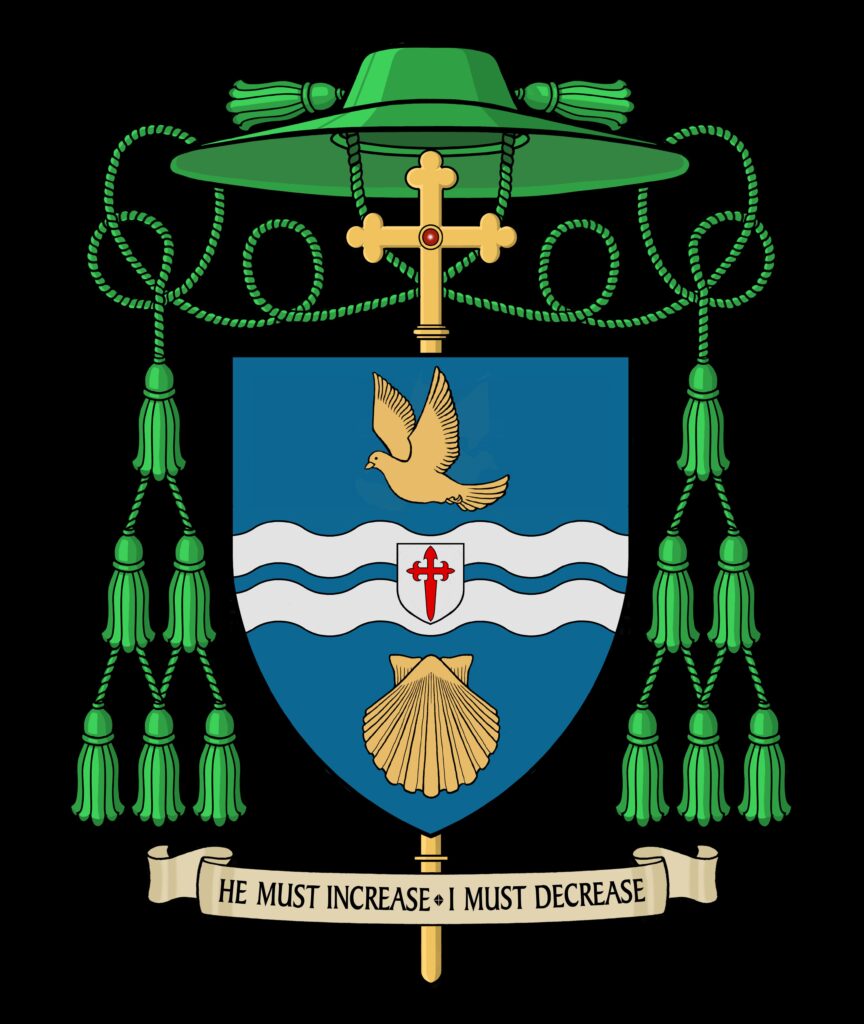
The shield is blue, complementing the wavy silver lines—both of which allude to the Bishop’s birthplace on the Mahoning River, his service to parishes on the shores of Lake Erie and the location of his See city on the banks of the Missouri River in Iowa. The gold scallop shell is a symbol of Saint John the Baptist, his patron saint, while the golden dove is associated with Saint Edward the Confessor, his second patron saint. A dove is also associated with Saint Columba, patron of the Diocese of Youngstown, as well as an important part of his family history. The small silver shield is the badge of a pilgrim who has completed the Camino de Santiago. The Bishop’s motto recalls the words of Saint John the Baptist referring to Jesus: “He must increase, I must decrease.”
Diocese of Sioux City arms, or “blazon”
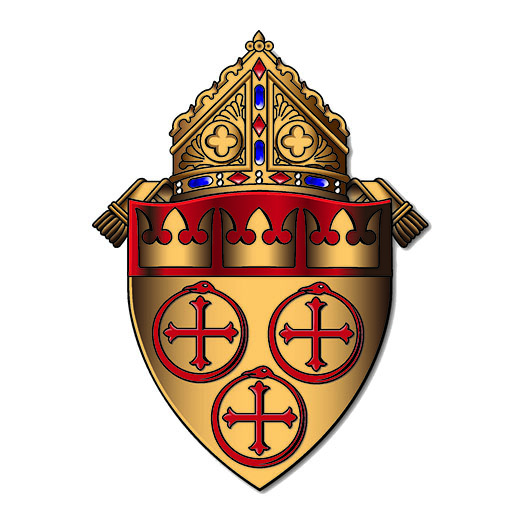
The arms are composed of a gold field that displays three red snakes. Each snake has its tail in its mouth, encircling a red cross and each cross’ arm ends in what looks like a lily. These snakes form the arms of the diocese because the Sioux, which means “little snakes,” was applied to the Dakota, Lakota and Nakota nations by the Chippewa tribe to distinguish them from the Iroquois, the “big snakes.” Each of the snakes is arranged in a circle, an ancient Native American symbol for eternity, acknowledging that all aspects of life are part of one Circle of Life. The snakes encircle a Cross, the symbol of the Christian faith. By the joint use of these symbols, we are reminded of the words of Saint Augustine, “To prefigure Christ’s Cross, Moses, by the merciful command of God, raised aloft on a pole the image of a serpent in the desert, that the likeness of sinful flesh, which must be crucified in Christ, might be prefigured.” The upper third of the diocesan arms, known as a “chief,” is red and has placed on it three gold crowns to signify the Magi. These three men from the East had the identity of Christ manifested to them and are celebrated on the feast of the Epiphany each year. By the use of these crowns, the three kings are acknowledged as the patrons of Sioux City’s Cathedral of the Epiphany.
Impalement of Arms
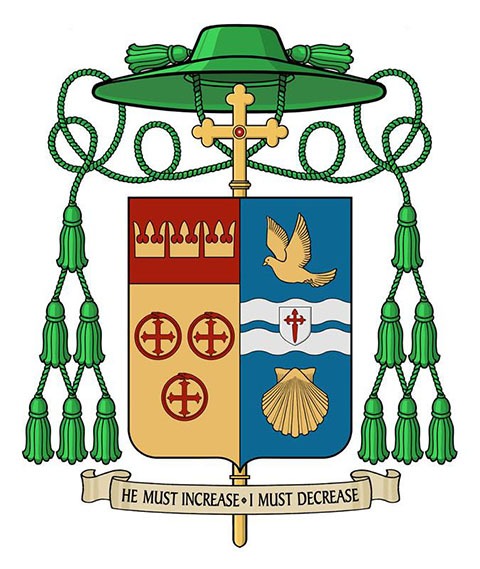
In the United States, it is customary for Bishops to combine their personal coats of arms with the arms of the diocese to which they are newly appointed. The most common method, “impalement,” consists of placing the arms of the diocese on the left of the shield and the personal arms of the Bishop on the viewer’s right. This can be seen as alluding to the “marriage” of the Bishop and his diocese, just as couples and families have combined their coats of arms since the inception of heraldry, in medieval times.
This story was written in coordination with Lumen Media, the official communications platform for the Diocese of Sioux City, Iowa. Visit their website.
